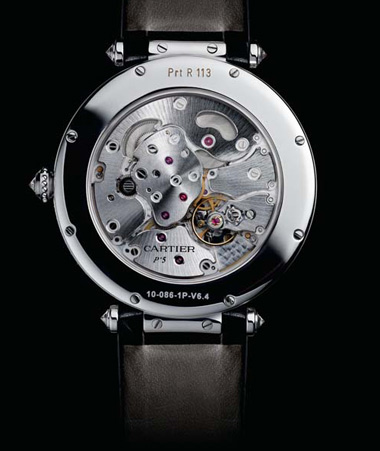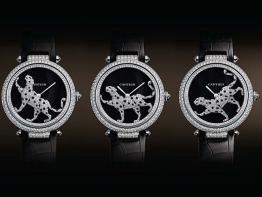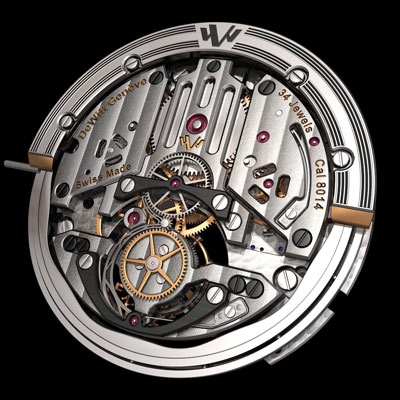By Carlos Torres
The number of mechanical watch movements with automatic winding systems long ago exceeded the quantity of their hand-wound counterparts. Although this paradigmc shift undoubtedly represented a technical evolution in watchmaking, with this sort of mechanical “upgrade” we also, somehow, lost the beauty of a complete and unobstructed view into the complexity of the mechanism. Only the advent of the micro rotor has partially managed to free the movement of this “unnatural” cover.
But not all is lost, and today one can say that there is a very rare kind of watch that, although allowing an unspoiled view of bridges, wheels and regulating organs, still allows the user to benefit from the comforts of automatic winding. This mechanical breed is known as the peripheral rotor and although the first patents to this system were filed in 1955 by Paul Gostel (CH322325) and a decade later by Patek Philippe (CH458213 in 1965 and US3412550 in 1968), the first brand to really start large-scale production was Carl F. Bucherer back in 2008.
The Carl F. Bucherer calibre CFB A1000
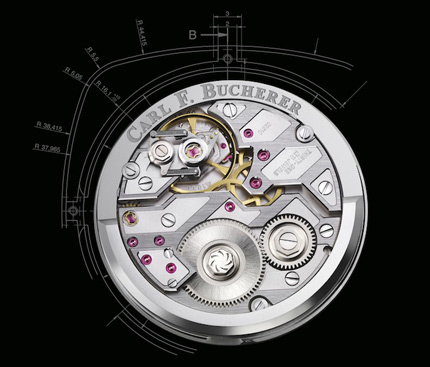
In 2008, Caliber CFB A1000 was unveiled to the public at Baselworld and went on to win Germany's “Goldene Unruh” prize the following year. It was said at the time, “that especially with its peripherally mounted rotor, which revolves around the movement instead of over it, delivering energy when turning in either direction, the Lucerne watch manufacturer achieved a technical quantum leap.” The show went on, and Carl F. Bucherer managed to stage a big entrance at Baselworld in 2009 by unveiling the Patravi EvoTec DayDate equipped with Carl F. Bucherer Caliber CFB A1001, the first serious series production watch with a peripheral rotor.
Caliber DW 8014 by DeWitt
One year later, again at Baselworld, DeWitt followed suit and presented the remarkable Caliber DW 8014, the first complicated regulator movement integrating a tourbillon and a patented and extremely ingenious Automatic Sequential Winding (A.S.W.) device, driven, of course, by a peripheral oscillating rotor. DeWitt states that this A.S.W mechanism enables the distribution of constant energy into the gear train through sequenced winding of the barrel, allowing for an ideal functioning range with the usage of a single, manual-type barrel. Moreover, it allegedly avoids all the running defects observed when slip springs are used on conventional automatic calibers. Caliber DW 8014 would be made available to the public the very next year inside the gold case of the DeWitt Twenty-8-Eight Regulator ASW.
Caliber 2897 by Audemars Piguet

The fact that Audemars Piguet was only one year away from commemorating the 40th anniversary of the Royal Oak in 2011 didn't prevent the brand from introducing a spectacular creation at the SIHH in Geneva. The Royal Oak Offshore Selfwinding Tourbillon Chronograph premiered the new Caliber 2897, which managed to distract attention from the amazing visuals provided by the forged carbon case band, ceramic bezel and rubber strap. Ensured by a peripheral oscillating weight in platinum, and mounted on ball bearings, this architecture shifts the weight of the rotor to the outer edge of the movement, thereby improving winding speed. Like in Carl F. Bucherer's CFB A1000, a recess was made in the case band to ensure that the 180° oscillating weight can rotate a full 360°. True to all movements with this kind of design, the position of the rotating mass in the periphery also enables it to maintain a slimmer profile.
Caliber 9603 MC by Cartier
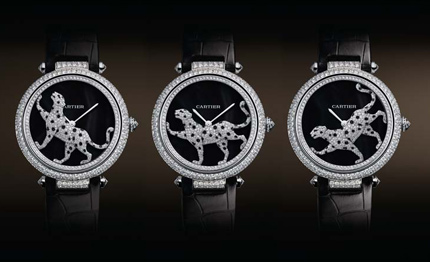
Finally, in 2012, a major manufacture opted to present another fine example of a watch with a peripheral rotor caliber that went almost unnoticed regarding its technical attributes. Dedicated to its female customers, Cartier discretely presented its bejeweled Promenade d´une Panthère, drawing attention only to its design attributes. The watch, equipped with Caliber 9603 MC, wasn't even announced as having a peripheral rotor winding system, a feature only revealed by the beautiful diamond-set panther that “promenades” along the dial of this exquisite watch. The sleek feline actually acts as the winding mass in this movement, a connection that is not revealed trough the transparent case back of the watch.
